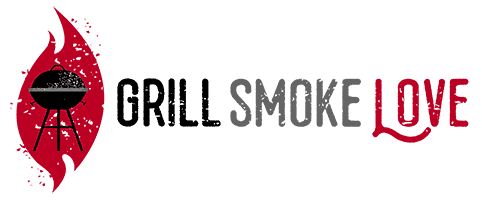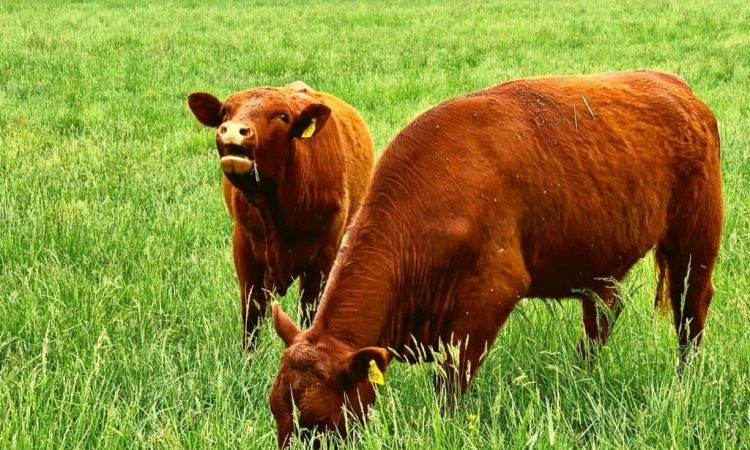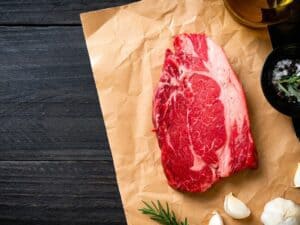You’ve seen it on menus, at burger stands, and on the labels at the grocery store: “Grass-Fed Beef”. Is it just a trendy fad or does it actually make sense to go grass-fed? And what does it exactly mean?
Let’s find out!
In this article, I will explain what grass-fed beef is, and how it compares to the grain-fed alternatives. I will also analyze the differences between grass-fed, grass-finished, pasture-raised, and organic meat.
It gets quite complicated with so many different terms and labels. Sometimes they are also used to mislead consumers on purpose. Why would someone do this?
When a meat producer labels the product “Grass-Fed”, they might get a higher price for their product, which means more profit. And if they can do this without breaking any law, then there is always someone who will exploit the lack of clear regulations.
Now, it’s time to make sense out of all this. Let’s start by defining what grass-fed beef is.

What Grass-Fed Beef Is All About
The demand for grass-fed meat has been on the rise for many years, and its popularity seems to be continually growing. More ranchers and farmers are raising and offering it, so more people have easy access to it and can taste it for themselves. However, it seems like most grass-fed beef in the US is actually imported.
Many people claim that there is a distinct taste difference between grass-fed and grain-fed beef, but some people can’t tell the difference.
Of course, there are also other factors that affect the taste of meat. These include the breed of the cattle, the growing environment, how the meat was processed and aged, and even the type of grass or grain it was fed with.
In general, grass-fed beef has a stronger flavor and lower fat content compared to grain-fed animals. Also, the color of fat in grass-fed beef is more yellowish as it contains more beta-carotene.
Clearing Up Some Misconceptions
First, let’s correct a few myths or stereotypes that may be floating around when the topic turns to the various choices for beef available. To begin, commercial cattle usually start their lives on one farm and are then transported to another location for “finishing” (a term adding on their final weight) and slaughter.
Just to be clear, there are many different levels of standards for raising cattle, and ranchers and farmers run the gamut in terms of farms and set-ups.
On one end there is a small, idyllic pasture scene with half a dozen happy cows milling about, and on the other end of the spectrum is a several thousand-head factory farm situation where there is hardly a blade of grass to be seen.
Oftentimes, the real picture is a medium between these two scenarios.
Beginning With Grass Is Typical
In general, calves raised for beef stay with their mothers for the first 5-8 months of life, and many have a diet that includes ample grass.
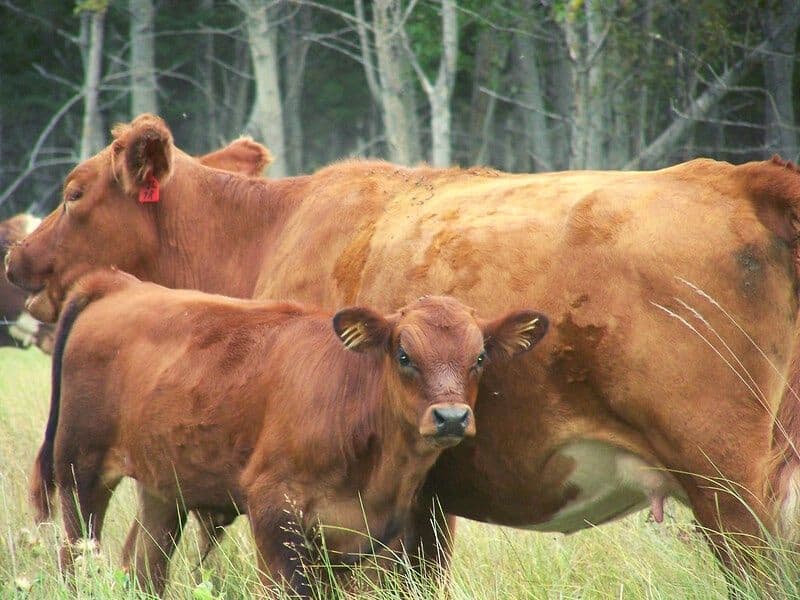
When ranchers and labels say “grass,” what they often mean is “pasture”. This includes clover, herbs, flowers, cover crops, and legumes, as well as grass. One cow generally needs an area of 1-2 acres during its lifetime.
The stories you hear about calves getting prematurely separated from their mothers mainly take place at dairy farms. The purpose is to get cows back to commercial milk production soon after giving birth.
For most ranchers raising cattle for beef, it makes more logical and economical sense to keep these mother-child pairs together to graze and feed as nature intended.
The Finishing Process
If you’ve ever driven through parts of the country that are home to the nation’s slaughterhouses, you’ll see many cows packed in together and large amounts of mud instead of pasture. These are the feedlots where conventional cattle go to get “finished” – meaning for the last several months of their lives, they are fed a diet of grains made up of mostly soy and corn.

This grain-heavy diet allows them to add on more bulk than a grass-finished cow is able to do. Grass-finished beef will take many months longer to add on that final weight, so many farmers opt for grain at the end because it is faster and more efficient for producing more meat.
Health Benefits of Grass-Fed Beef
Grass-fed beef is marketed as tastier, healthier, and better for the environment. But is there any truth to these claims?
One amazing benefit of grazing on natural green pastures is that it provides the animals with powerful antioxidants and other healthy compounds such as precursors for Vitamin A and E.
This is because many plants create these substances during their lifetime in order to protect themselves from the sun’s UV rays.
As the calves eat from pastures, they digest plants that have natural abilities to ward off disease and premature aging. These nutrients collect in their fat and are marbled throughout their meat. When we consume this, we are also getting benefits we might not have even considered.
There is no doubt that grass-fed beef has added nutritional values that are noteworthy.
Consuming mainly grasses and pasture-based crops means an overall improvement of the fatty acid composition and antioxidant levels. This means that there are more healthy and nutritious omega-3 fatty acids in the meat, as well as cancer-fighting antioxidants.
Grass-fed beef is also higher in carotenes and carotenoids, which have many health implications. Carotenes contribute to healthy vision, bone growth, and cell function in our bodies and are important building blocks of optimal health.
Yet, one thing to note is that some of the added vitamins, fats, and fatty acids are in the highest quantities in animal fat, which is often trimmed off.
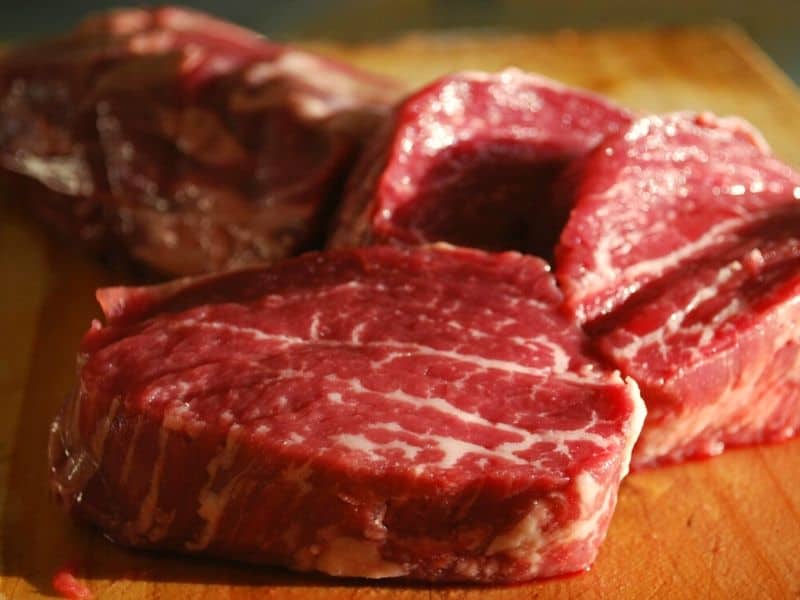
When the fat marbles throughout the meat, you are able to consume it more readily, and this composition can increase the overall flavor of the beef. However, the marbling effect is less common with grass-fed animals.
Critical Point of View
Some doctors and nutritionists say that the differences between grass-fed and grain-fed beef are so minimal it doesn’t really make a difference. This is because there are many other factors that contribute to the quality and nutrition density of the meat like the quality of grass or grain feed and the general living conditions of the animals.
The choice is really more about your own values and preferences. Are you willing to put in some extra effort and money to buy beef that has been produced as naturally as possible, or are you okay with buying the cheaper mass-produced meat?
What About The Environment?
Feeding cattle nothing but pasture is definitely an environmentally sound practice that improves soil health and air quality overall.
A pasture can grow naturally without fertilizers or pesticides, unlike when producing grain feed.
Using nitrogen fertilizers for producing animal feed can cause severe damage to the environment as it can leak and disturb the natural balance.
Air quality is also improved with these ranching practices because clover-rich pasture land is grown naturally. This means less poisons in our dirt and less toxic runoff for our waterways.
In addition, growing a wide variety of crops as opposed to a singular crop (like corn) leads to greater biodiversity.
Opposing Factors
To be completely objective here, we can’t ignore the fact that there are also studies claiming that grain-fed beef has lower greenhouse gas emissions. What is important here, is that these results apply specifically to meat produced in the US where there is a lot of locally produced corn available.
Raising grass-fed cattle in Scotland or Australia makes a lot more sense because these countries have vast grasslands that are not suitable for cultivating corn.
The Pricing Factors
Finally, there is the issue of cost, first with the farmer and then with the consumer.
Quite simply, not all farmers are able to afford to raise 100% pasture-fed and -finished beef for the duration of the cattle’s lifetime. It takes a lot more space and time to create this type of finished product, and some ranchers don’t have that in their budget.
A popular compromise these days is to allot a certain percentage of cattle to be finished with grass to satisfy that specific demand in the market, and the rest is processed in a conventional method. This way a farmer can experiment with this technique to see if it’s financially viable.
It’s important to note that these additional expenses are shared with the consumer at the end of the supply chain as well. So you will probably notice a higher price tag on grass-fed and -finished beef.
Different Labels
Now, let’s dive in and break down all the various labels you might encounter. The purpose is to make it really clear what you’re getting from the grocery store or butcher next time.
Grass-Fed vs. Grain-Fed
While some folks like to buy grass-fed meat, other consumers prefer the texture and taste of beef that has been fed grain. The marbling may be more desirable or perhaps they are just on a tight budget.
Consumers want to see the label right there on the packaging regardless, so this is a very common element to have on a meat package.
If you have a label saying the beef is “Grain-Fed”, then you know what you are getting. The animals have spent their early life on the pasture and then finished in the feeding lot with a grain-based diet.
However, a label that says “Grass-Fed” doesn’t necessarily tell you anything.

For example, see the Safeway Open Nature product above. This seems to be a typical “scam” that is used for marketing purposes. When looking at their website, it seems the meat is naturally produced, which means they don’t use antibiotics or hormones. Also, they say it’s “100% vegetarian”.
So this is all great, and the meat is probably produced more naturally than some other alternatives. However, it seems like the meat is just the typical grain-finished feedlot beef you can get anywhere.
This is a very common label trick for many cattle ranchers and slaughterhouse manufacturers. Since most cattle begin with grass, as described above, most labels can say “Grass-Fed” without mischaracterizing their beef.
Grass-Fed vs. Grass-Finished
When a label says “Grass-Finished” you know that the animals have been eating only grass (or other plants on the pasture).
So if you really want grass-fed beef, look for labels that say “100% Grass-Fed” or “Grass-Finished” and you’re on the right track.
Unfortunately, it’s not that simple. Some large meat producers keep the animals in concentrated feedlots and feed them manufactured grass pellets.
This allows them to label their product “100% Grass-Fed”, even the cattle is fed with pellets and kept confined.
Grass-Fed vs. Pasture-Raised
Now we are really getting into something. “Pasture-Raised” beef could be the real deal as this means the animals are roaming free and eating the nutritious plants naturally growing on the pasture. But is it?
Again, we don’t really know. There is no clear definition or standard for the pasture-raised label. There are some guidelines saying the animals must spend at least some portion of their lives on pasture to qualify as “Pasture-Raised”.
The cattle could still be pumped full of antibiotics, and their diet might be supplemented heavily with grain. It’s also possible they only spend minimal time on the pasture and are mostly kept indoors.
Grass-Fed vs. Organic
This is a very important distinction that has not been discussed yet. Just because a farmer or rancher lets their cattle feed on pasture, or feeds them grass, doesn’t mean that the meat is organic.
Meat can still be labeled as “100% Grass-Fed” or “Grass-Finished”, while pesticides are used and organic farming methods are not followed. In addition, antibiotics and artificial growth enhancers may have been used even on 100% grass-fed cattle.
Avoid this pitfall by seeking out “USDA Organic” certified products. There are also other organic standards, such as European Union (EU) organic. An arrangement between the US and EU eliminates the need for U.S. organic operations to have a separate certification to the EU standards and vice versa. So either one of these seals means the product is 100% organic.
The United States Department of Agriculture (USDA) has clearly defined the requirements for raising cattle organically.
The most important criteria for organic beef are the following:
- No genetic engineering, use of ionizing radiation, or sewage sludge
- Continuous access to the outdoors (except in specific conditions)
- Raised on land that meets all organic crop production standards
- Fed 100% certified organic feed (except some vitamins and minerals)
- No antibiotics and growth hormones
Also, keep in mind that growing cattle according to organic standards might be costlier, which means the beef will have a higher final price tag.
The practices might be more time-consuming overall which can also increase the price. Only you can decide whether these prices are worth paying when it comes to the meat you consume.
And keep in mind that organic cattle can be fed organic soy and grain, so it is not necessarily 100% grass-fed.
Important Third-Party Labels
There are a couple of third-party labels that should be mentioned here.
Certified Grassfed by AGW is a label that guarantees the meat comes from animals:
- Fed a 100 percent grass and forage diet
- Raised outdoors on pasture or range
- Managed according to the highest welfare and environmental standards on an independent farm
Global Animal Partnership label that certifies producers on a six-tier scale. Feedlots are prohibited and access to pasture is required at Step 4 and higher. You can find more about the different labels and how they look on the G.A.P. website.
How To Buy The Right Kind Of Beef?
Are you confused already? Well, let’s wrap things up and try to make sense of all this information.
When it comes to all the different types of beef available to us, it’s up to you as the consumer to nail down exactly what you are looking for and to shop accordingly.
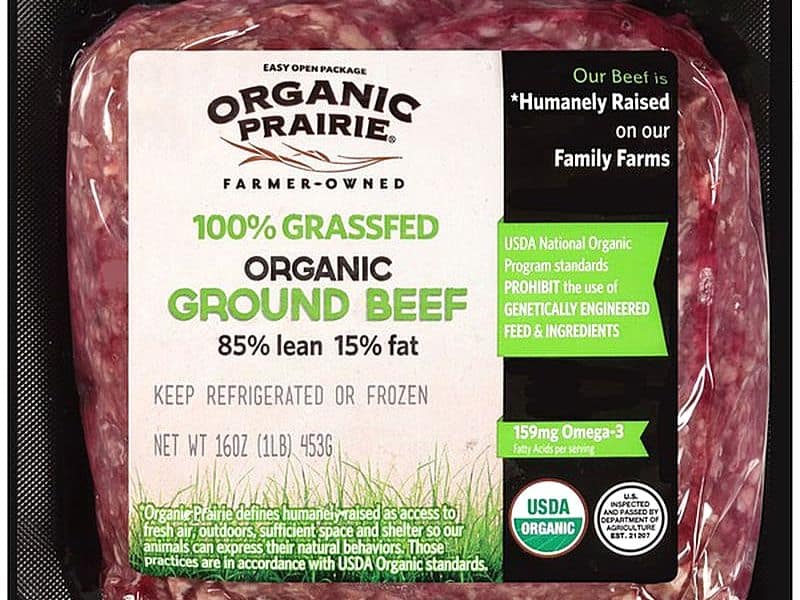
To sum things up and make everything a bit more simple, here are my tips for buying the right kind of beef:
- First, prioritize what you would prefer to have in terms of cost, nutrition, and flavor. Also, consider the environmental factors and ethical points of animal living conditions.
- If you want beef that is as naturally grown as possible and are willing to pay more, choose meat that is both 100% grass-fed or grass-finished (or pasture-raised) and certified organic. You can also look for products with Certified Grassfed by AGW or Global Animal Partnership labels. Yet, if you prefer the taste of grain-fed beef and like a proper marbling, get some prime or choice grade meat.
- Pay close attention to all the product labels to make sure you get the right kind of product. Maybe even put in some extra effort and research the particular meat brand that you are buying.
And remember, sometimes the labels are meant to be misleading!
One great option is to buy the meat from a butcher’s shop that sells locally produced meat. Just ask the butcher where exactly the meat comes from and how the animals have been raised.
Now that you’ve read about what each labeling distinction means and know more about how cattle are raised, you’ll be better informed when you’re shopping for your family’s next barbecue. Having some naturally grown high-grade beef on your grill is truly something to look forward to!
If you want to read more about grass-fed beef and how to cook it, I recommend that you check out a book named ‘Pure Beef‘ by Lynne Curry available on Amazon.
All in all, it can be quite tricky to know exactly what you’re getting. But let’s not stress too much. After all, buying and cooking the meat should be fun, not a complicated process that’s getting you gray hair.
Happy hunting!
